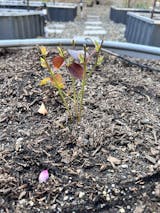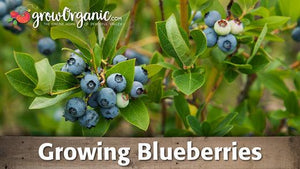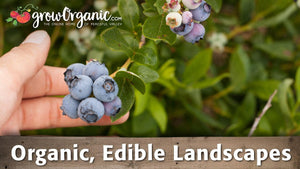Item Number: FV368
Emerald Blueberry (Mid Harvest)
Vigorous plants, extra-large fruit.
Mix-and-match for free shipping when purchasing 6 or more perennial berries, vines, or crowns!
The emerald blueberry is a heat-tolerant, vigorous variety prized for its extra-large, sweet berries—perfect for fresh eating, baking, and freezing. This highly productive emerald blueberry bush thrives in full sun and well-drained, acidic soil, making it ideal for warm southern climates. Known for its extended harvest season and consistent yields, it’s a top choice for gardeners seeking delicious, high-quality fruit with minimal upkeep.
With its impressive size, firm texture, and mild sweetness, the emerald blueberry is a premium addition to any home garden or edible landscape. If you're looking for an emerald blueberry for sale that delivers dependable performance and flavor, this variety is an outstanding pick for Zones 8–10.
-
Variety: Southern Highbush
-
Plant Age: 1.5 years
-
Zones: 8-10
-
Chill Hours: ≥ 500
-
Harvest: Mid-season
-
Bush Habit: Rounded, spreading bush reaching 5'-6' tall with green foliage in fall.
-
Fruit: Very large, mildly sweet flavored berries.
Facts of note: Emerald yields abundant crops of the largest southern highbush berries with a mild, sweet flavor. Its rounded, spreading bush habit makes it a great landscape plant.
Dependable in southern climates with a low chill requirement of 250 hours. Long harvest period. Difficult to grow from blueberry seeds.
Emerald Blueberries, scientifically known as Vaccinium corymbosum 'Emerald', are a distinctive variety of the southern highbush blueberries. These plants have gained popularity for their unique characteristics, including their flavor profile, growth habits, and historical development. Understanding the details of Emerald Blueberries helps gardeners and consumers appreciate this particular fruit.
Emerald blueberry plants are popular in the US and thrive in various soils, particularly sandy ones with good drainage. Blueberry plants can grow in many places because they can handle different levels of pH in the soil.
Appearance and Flavor Profile
Emerald Blueberries stand out with their large, plump berries that exhibit a deep, glossy blue hue when ripe. These fruits look nice and have a firm texture, so they are great for eating fresh or using in cooking. Blueberry fans love the sweet and slightly tart taste of these berries, finding them refreshing and well balanced.
Growth Conditions and Root Systems
Blueberries are a staple crop in the United States, cherished for their flavorful berries and nutritional value. These plants boast shallow root systems that extend widely, making them well-suited for sandy soils common in many regions.
These blueberries thrive in acidic conditions, with a pH level ideally ranging between 4.5 and 5.5. When planting, ensure the soil is prepared to the appropriate depth, typically around 18-24 inches deep, to accommodate the shallow root system of the blueberry plants. Incorporating organic matter like wood chips into the soil can help maintain acidity levels and improve soil structure.
Blueberries are often cultivated in garden plantings, where they can benefit from mulching with wood chips to retain moisture and suppress weeds. With proper care and attention to soil acidity, depth, and mulching, blueberries can flourish and provide abundant harvests for years to come.
Emerald Blueberry plants are known for their vigor and productivity. They require full sun exposure for optimal growth and berry production. Additionally, these plants are cold-hardy, making them suitable for cultivation in regions with cooler climates. However, they do require some winter chill hours to produce fruit effectively.
History of the Plant
The history of Vaccinium corymbosum 'Emerald' is intertwined with the broader history of blueberry cultivation. Southern highbush blueberries, the category to which Emerald blueberries belong, are native to North America. The domestication and breeding of these wild plants began in the early 20th century, aiming to improve berry size, taste, and plant hardiness.
Emerald blueberries were developed through selective breeding programs focused on enhancing qualities such as berry size, flavor, and the adaptability of the plants to different environmental conditions. The Emerald blueberry bush is a direct result of these efforts, offering a variety with excellent fruit and hardiness. For optimal growth, peat moss is often recommended to improve soil conditions, ensuring the best environment for this variety to thrive.
For more information, please enjoy our Growing Guide for planting and growing blueberries.
Visit our Berry, Vine & Crowns Characteristics Chart to compare growing characteristics for all our berries, vines, and crowns.


Check Your Zone Compatibility:
Compatible with your zone.
Growing Zone for

Our Guarantee To You
Since 1976, we've served our customers at every stage of growing. Please contact us at any time. We are happy to support and assist you.
Shipping Information
Shipping Information
Cannot ship to the following states: HI, AK, PR, GU, VI
Cannot ship via USPS.
Cannot ship via SmartPost.
Shipping Weight: 3.0 lb
Dimensions: 14.0"L x 3.0"W x 3.0"H
Features
Features
- Bare Root
- Container Compatible
Characteristics
Characteristics
Planting & Care
Planting & Care
Useful Information
Useful Information
Guarantee
Guarantee
Limited Dormant Tree & Plant Guarantee
* Claim deadline is June 15th
We guarantee that your dormant tree or plant will arrive in good, viable condition. If your tree arrives in substandard condition, notify us within 3 days of delivery. Please email pictures of the box, inside packaging, the tree and its roots to helpdesk@groworganic.com. We will investigate your claim and process a request to exchange or refund the damaged product.
If your dormant tree or plant has not grown new leaves by June 15th, you may be eligible for our Limited Dormant Tree & Plant Guarantee. This guarantee provides for a store credit for the purchase price of the tree, excluding shipping. Please see the Instructions below.
Important Dates:
- April 1st Dormant trees/plants must be planted in the ground
- May 15th Perform scratch test, if no new leaves have grown
- June 15th Deadline to apply for a dormant tree/plant credit
All required documentation must be received by June 15th for your claim to be considered. Claims or documentation received after June 15th will be denied, without exception. Instructions listed below
Terms and Conditions
We cannot guarantee that your tree or plant will remain alive and healthy after it is received, or bear fruit as there are too many variables in your environment that are beyond our control (i.e. soil preparation, weed and pest control, proper irrigation, chill hours, compatible hardiness for your growing zone, proper choice of pollinator, extreme weather, rodent damage, disease, etc.).
We cannot guarantee that we will be able to provide a replacement tree/plant of the same species either that same growing season or in future years. Customers are responsible for all shipping fees associated with replacement trees and plants.
If we determine that the tree you purchased directly from us is not viable, we will issue you a store credit (not a refund) for the purchase price of the affected dormant tree or plant. Shipping is not included in the dormant tree/plant guarantee. Store credits can be used to purchase any product we sell and are valid for use only until July 1st of the following year.
Historically, 98% of our dormant trees and plants grow and thrive when they have been cared for and planted using our growing guides. Dormant trees and plants must be planted in the ground by April 1st in order to be eligible for credit. If the ground in your area is still frozen solid, you may temporarily plant your tree or plant in a pot.
Potted, non-dormant trees or plants are excluded from this guarantee as they are not dormant at the time of shipment. Evergreen trees such as citrus, avocado and olive trees are not available for credit under the Dormant Tree and Plant Guarantee.
Instructions
We guarantee that your dormant fruit tree or plant will leaf out, if you care for it according to our growing guides. In the unlikely event that your dormant tree or plant does not have leaves by May 15th, follow these simple steps to apply for a store credit:
Before you call or email, please perform a “scratch test” to determine if the tree or plant is still alive. This video shows how to check for live tissue under the bark. Scratch tests need to be done a few inches above and below the graft.
Green Cambium Layer / Living Trees
If the cambium layer under the bark is green, give your tree a little more time. It is still alive, but hasn’t come out of dormancy yet. Check to make sure that it is getting the right amount of deep root water, enough sunlight and that the weather is warm enough for that type of tree/plant to come out of dormancy. Every tree has its own personality and will come out of dormancy at different times. Be sure to submit the required documentation listed below by June 15th, if it doesn’t grow leaves.
Brown Cambium Layer / Dead Trees
If the scratch test shows a brown cambium layer or if your dormant tree/plant doesn’t have leaves by June 1st, please email us at helpdesk@groworganic.com. All required documentation listed below must be received by June 15th for your claim to be considered. To be considered for the guarantee claim, all required documentation must be received by June 15th. Incomplete submissions will be denied.
Required Documentation
- Order number
- Name of dormant tree/plant and the quantity affected
- Photos of each tree or plant showing:
- The roots (tree or plant must be pulled out of the ground)
- The scratch test areas
- The entire tree/plant
We reserve the right to not issue credit for items that have already been replaced. We also reserve the right to require photographic evidence that the tree/plant was not killed by root rot, rodent or mechanical damage.
Share
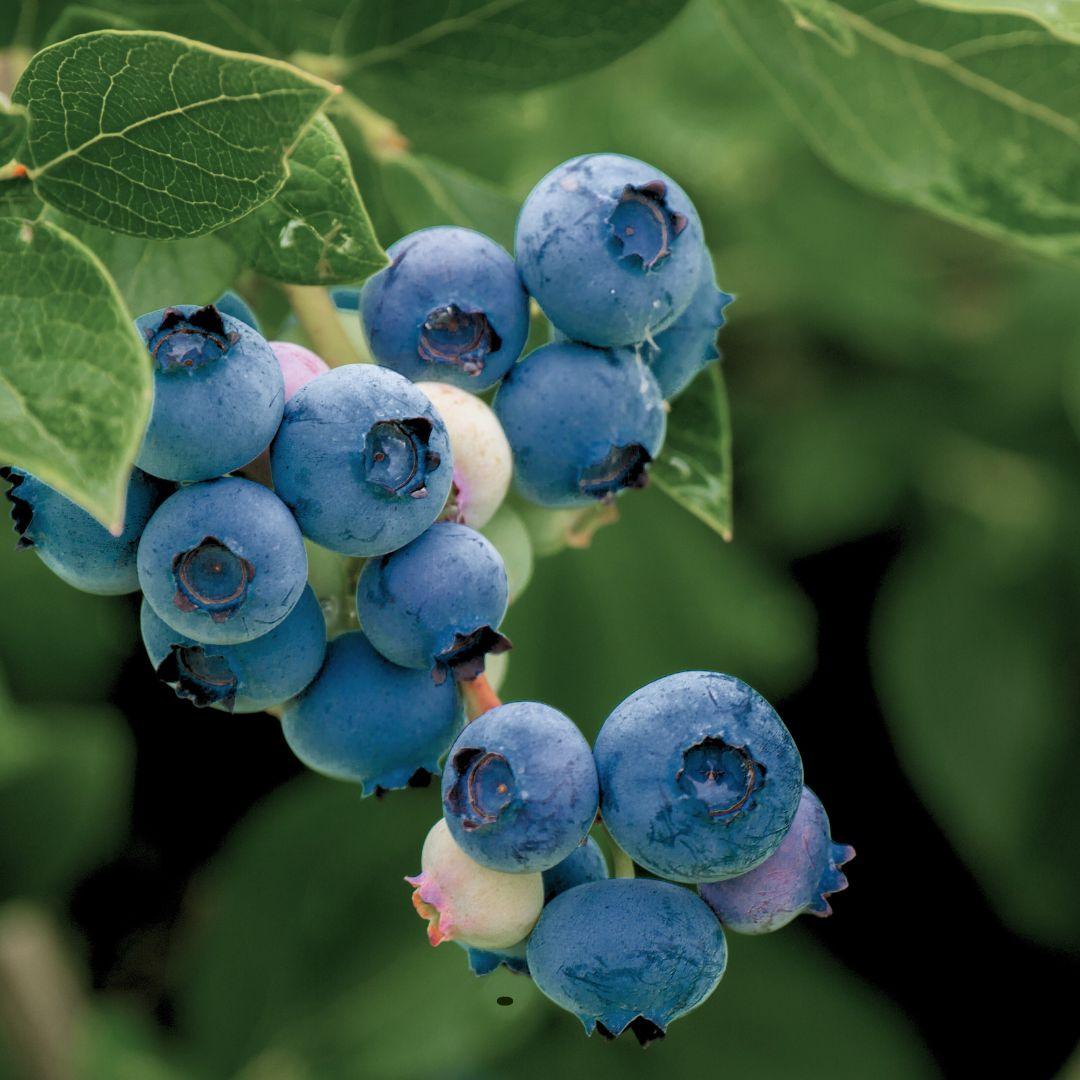
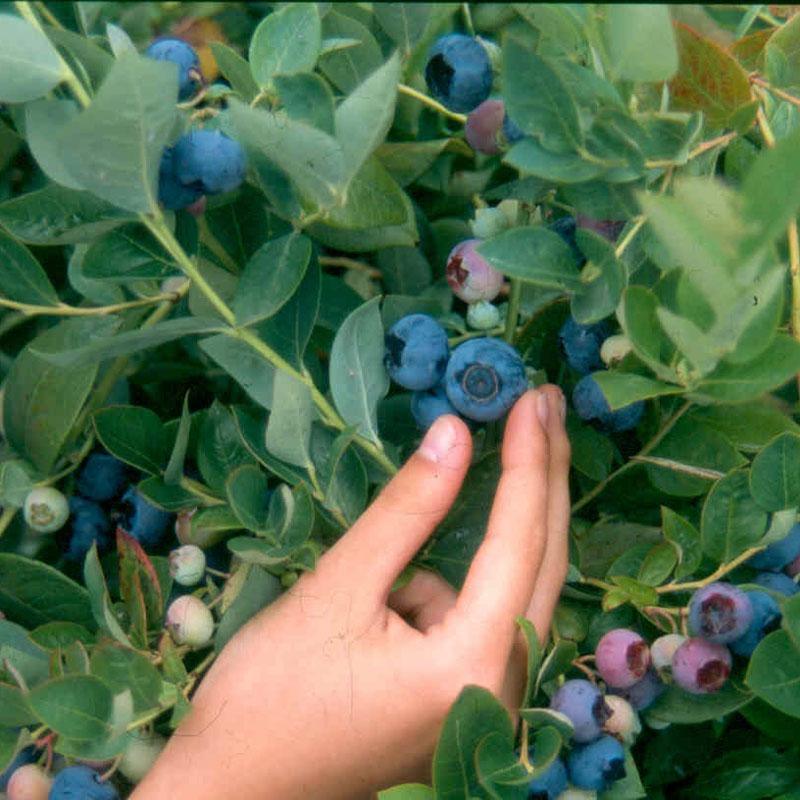
The emerald blueberry plant I received looks healthy and happy. I put it in the ground a few days after it arrived. It has been two weeks and it is showing signs of new growth! The plant is about 7” tall with 5-6 good stems. I’m excited to see how it does this season. Customer service was also excellent and quick to respond when I needed to change my order before it shipped.
young plants growing well
The berries arrived during an unusually wet winter which caused a delay in getting the ground ready to plant so they will start out in a pot. They had obviously been grown in a tube of sorts and came with their soil so as not to harm the tiny feeder roots. Everything looks healthy though not having purchased their berry bushes before are about 1/2 the size I expected. They are a perfect size to transplant into 1 gallon containers. This will let their root systems grow out more and when transplanted will give them an even better chance for an easy start in the soil. I will keep a close eye on them but at this time I think letting them spend a growing season in a gallon pot to build up their root system while giving organic sulfur and bacteria time to do their thing and then transplanting in late fall will work out best. Bottom line is the plants were about half the size I expected but arrived healthy with a good root system & feeder roots intact. No perceived issues.
Great berries, this was my 2nd order of these - love ‘em!
I purchased this variety and Reka. Reka is thriving and this plant has died after being acclimated the same way. I sent an email to the company about this plant and some fall gold raspberries that also died to no avail. The leaves turned bright red on both varieties while acclimating a week later the Emerald variety dropped all its leaves and died.
Articles
-
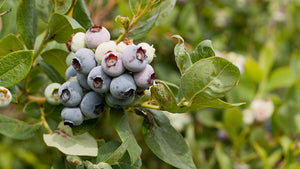 Tue, Oct 07, 2025
Tue, Oct 07, 2025Blueberry Basics
-
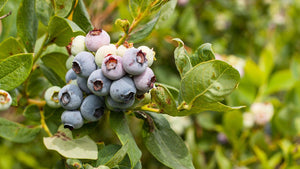 Fri, May 02, 2025
Fri, May 02, 2025Extend Your Blueberry Harvest
-
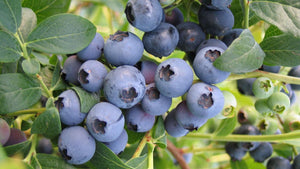 Fri, Jun 13, 2025
Fri, Jun 13, 2025Can Blueberry Grow in Tropical Climate? Top Tips for Growing Blueberry in Tropical Climate and Choosing Heat Tolerant Blueberries
-
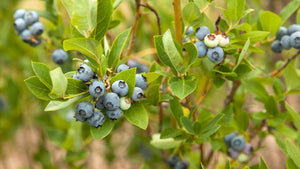 Tue, Feb 11, 2025
Tue, Feb 11, 2025How to Prune Blueberries
-
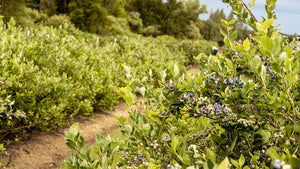 Mon, Jan 27, 2025
Mon, Jan 27, 2025Find Your Thrill with Blueberry Chill (Hours)



